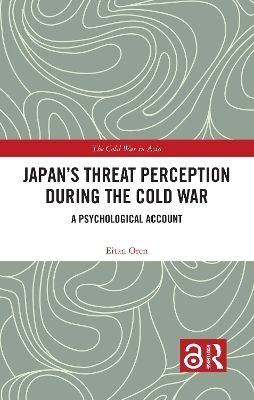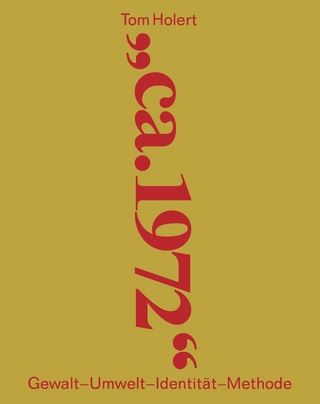
Japan’s Threat Perception during the Cold War
A Psychological Account
Seiten
2023
Routledge (Verlag)
978-1-032-14829-8 (ISBN)
Routledge (Verlag)
978-1-032-14829-8 (ISBN)
Oren re-examines Japan’s threat perception throughout the entire Cold war, using a wide range of source materials, including many unavailable in English, or only recently declassified.
Oren re-examines Japan’s threat perception during the first two decades of the Cold War, using a wide range of source materials, including many unavailable in English, or only recently declassified.
There is a widely shared misconception that during the Cold War the Japanese were largely shielded from threats due to the American military protection, the regional balance of power, Japan’s geographical insularity, and domestic aversion to militarism. Oren dispels this, showing how security threats pervaded Japanese strategic thinking in this period.
By dispelling this misconception, Oren enables us to more accurately gauge the degree to which Japan’s threat perception has evolved during and after the end of the Cold War and to enhance our understanding of Tokyo’s strategic calculus in the current situation of rivalry between China and the United States.
This book will be of great value to both scholars of Japanese history and contemporary international relations.
Chapters one and four of this book is freely available as a downloadable Open Access PDF at http://www.taylorfrancis.com under a Creative Commons [Attribution-Non Commercial-No Derivatives (CC-BY-NC-ND)] 4.0 license.
Oren re-examines Japan’s threat perception during the first two decades of the Cold War, using a wide range of source materials, including many unavailable in English, or only recently declassified.
There is a widely shared misconception that during the Cold War the Japanese were largely shielded from threats due to the American military protection, the regional balance of power, Japan’s geographical insularity, and domestic aversion to militarism. Oren dispels this, showing how security threats pervaded Japanese strategic thinking in this period.
By dispelling this misconception, Oren enables us to more accurately gauge the degree to which Japan’s threat perception has evolved during and after the end of the Cold War and to enhance our understanding of Tokyo’s strategic calculus in the current situation of rivalry between China and the United States.
This book will be of great value to both scholars of Japanese history and contemporary international relations.
Chapters one and four of this book is freely available as a downloadable Open Access PDF at http://www.taylorfrancis.com under a Creative Commons [Attribution-Non Commercial-No Derivatives (CC-BY-NC-ND)] 4.0 license.
Eitan Oren is Lecturer at the Japan Programme in the Department of War Studies at King’s College London, UK
1 Japan’s Threat Perception - Introduction 2 An alternative framework for the analysis of Japan’s threat perception 3 Japan’s Threat Perception in the early Cold-War Era (1952-1972) 4 Explaining Japan’s Threat Perception 5 Conclusion
| Erscheinungsdatum | 27.01.2023 |
|---|---|
| Reihe/Serie | The Cold War in Asia |
| Zusatzinfo | 4 Tables, black and white; 4 Line drawings, black and white; 4 Illustrations, black and white |
| Verlagsort | London |
| Sprache | englisch |
| Maße | 156 x 234 mm |
| Gewicht | 444 g |
| Themenwelt | Geschichte ► Allgemeine Geschichte ► Zeitgeschichte |
| Sozialwissenschaften ► Politik / Verwaltung ► Europäische / Internationale Politik | |
| Sozialwissenschaften ► Soziologie ► Spezielle Soziologien | |
| ISBN-10 | 1-032-14829-2 / 1032148292 |
| ISBN-13 | 978-1-032-14829-8 / 9781032148298 |
| Zustand | Neuware |
| Haben Sie eine Frage zum Produkt? |
Mehr entdecken
aus dem Bereich
aus dem Bereich
Gewalt, Umwelt, Identität, Methode
Buch | Softcover (2024)
Spector Books OHG (Verlag)
CHF 49,95
der Osten, der Westen, der Zorn und das Glück
Buch | Hardcover (2024)
S. Fischer (Verlag)
CHF 36,40


